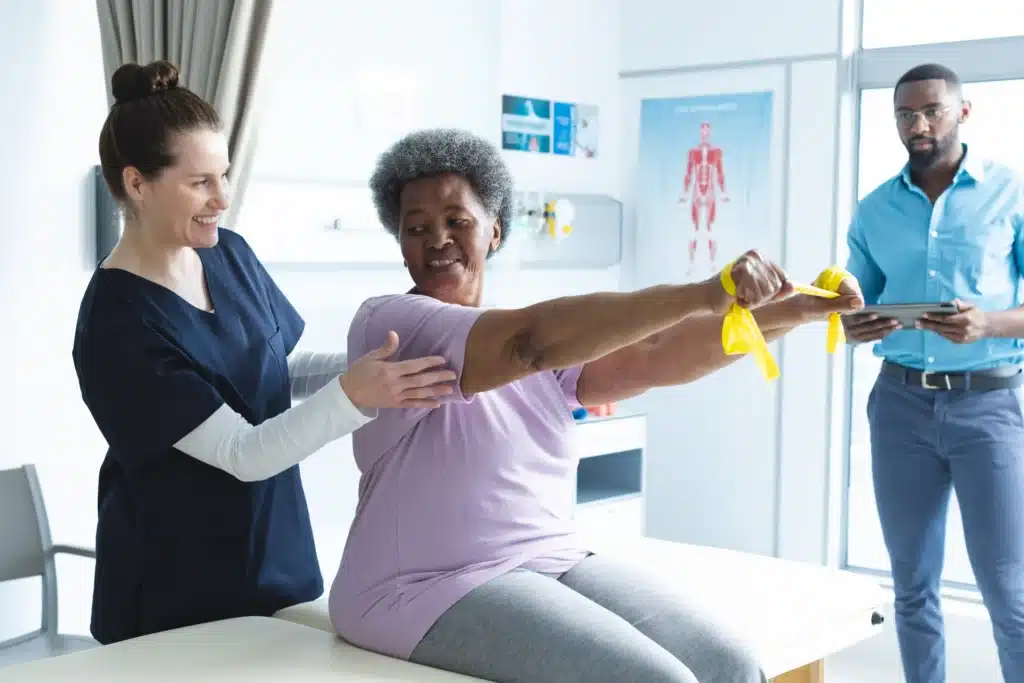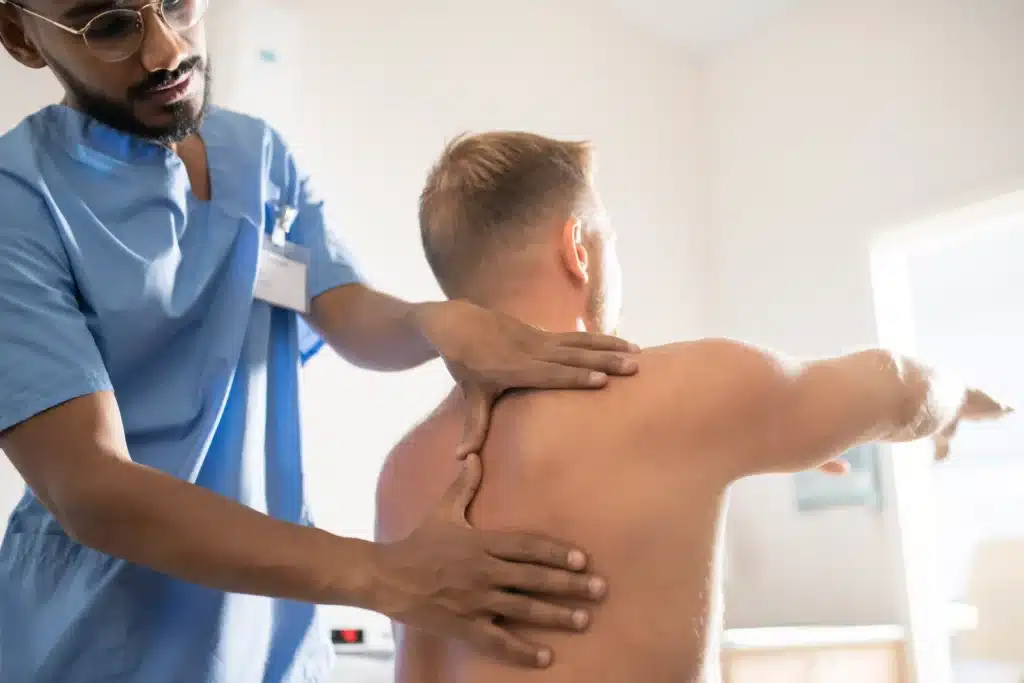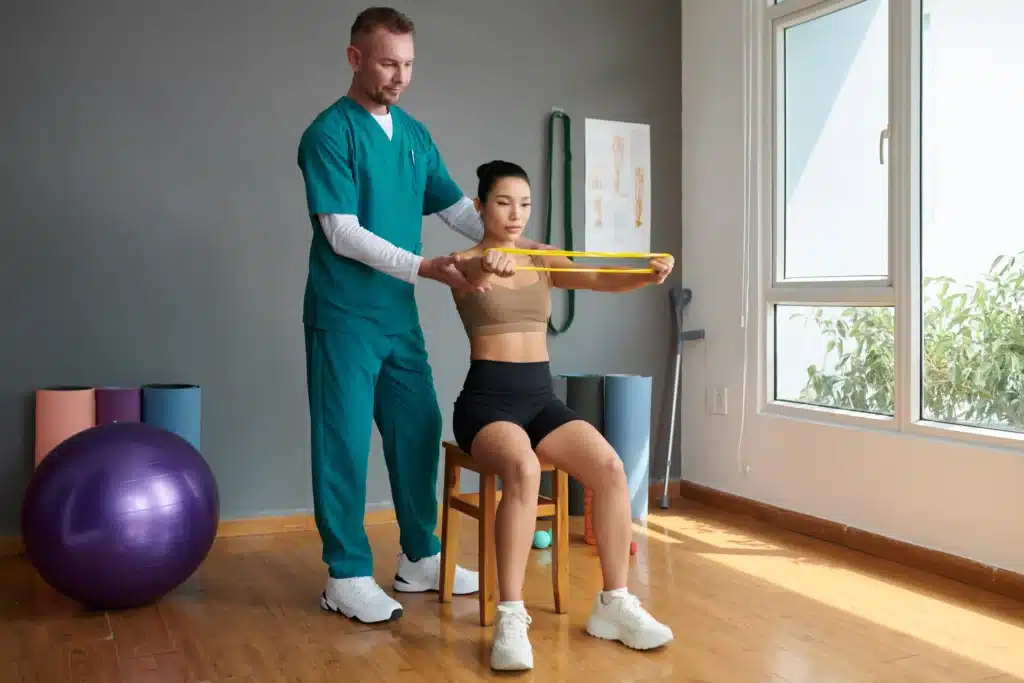
Table of Contents
ToggleSpinal fusion rods and screws are essential components in spinal fusion surgery, a procedure designed to stabilize the spine by fusing two or more vertebrae. These implants act as scaffolding, keeping the spine in proper alignment while the bone graft heals and solidifies.
Made from durable materials like titanium or stainless steel, they are biocompatible and highly resistant to wear. In my 25 years as a spine surgeon, I’ve seen how these devices revolutionize outcomes for patients with severe back pain or instability.
When properly placed, spinal fusion rods and screws create a stable environment that allows the body’s natural healing processes to take over, leading to significant pain relief and restored function.

Spinal fusion rods and screws are commonly used to treat conditions that compromise spinal stability. For example, patients with scoliosis, a condition where the spine curves abnormally, benefit greatly from the rigidity these implants provide.
Similarly, those with degenerative disc disease or arthritis that leads to spinal instability often find relief through this procedure. In cases of trauma, such as fractures or dislocations, rods and screws prevent further damage to the spine and surrounding tissues.
I’ve also treated patients with spinal stenosis, a narrowing of the spinal canal, where stabilizing hardware is crucial after decompression surgery. These tools are invaluable in correcting deformities, stabilizing damaged areas, and reducing chronic pain caused by instability.
Spinal fusion surgery is a meticulous process requiring advanced imaging techniques and surgical precision. Before surgery, we use tools like CT scans or X-rays to plan the exact placement of the rods and screws.
During the operation, patients are placed under general anesthesia, ensuring comfort and safety.
The procedure typically begins with an incision, either from the back, front, or side of the spine, depending on the condition being treated.
Screws are carefully inserted into the vertebrae through the pedicles, serving as anchor points. A rigid rod is then connected to these screws, stabilizing the area.
In some cases, minimally invasive techniques, such as percutaneous pedicle screw placement, are used to reduce recovery time and scarring.
The benefits of spinal fusion rods and screws are transformative for many patients. By providing immediate stability to the spine, these implants reduce pain and prevent further deterioration of the affected area.
Patients often report significant improvements in mobility and overall quality of life following the procedure. Another advantage is the longevity of these devices.
Made from durable materials, rods and screws can withstand the stresses of daily activities for years. For patients with severe deformities, such as scoliosis, spinal fusion with rods and screws can dramatically improve posture and alignment.
Furthermore, advancements in design, such as flexible rods, have reduced stress on adjacent segments, enhancing the long-term success of the surgery.
As with any surgical procedure, spinal fusion carries some risks, though they are relatively rare. Infection is one of the more common concerns, occurring in about 1–2% of cases.
To minimize this risk, we ensure sterile conditions and provide antibiotics during and after surgery. Hardware failure, such as screw loosening or rod breakage, can occur, particularly in highly mobile areas like the lower back.
However, using flexible rods has significantly reduced these issues. Other potential complications include injury to nearby nerves or blood vessels, cerebrospinal fluid leaks, or even pulmonary embolism.
It’s important to discuss these risks with your surgeon to understand how they are mitigated.

Recovery from spinal fusion surgery requires a combination of rest, monitoring, and gradual rehabilitation. Patients typically stay in the hospital for 2–3 days, where pain management and early mobilization are priorities.
At home, it’s important to follow all post-operative instructions, including wound care and activity restrictions. Physical therapy plays a crucial role in recovery.
Therapists help patients relearn how to move, sit, and stand in ways that protect the spine. While it can take 6–12 months for the bone graft to fully heal and fuse, most patients begin to feel significant improvements within weeks.
During this time, wearing a brace may be recommended to ensure proper alignment and stability. Read more here.
One of the most common questions I hear is, “Will I feel the hardware in my spine?” For most patients, the answer is no.
The body adapts to the presence of the rods and screws, and they typically go unnoticed during daily activities. In rare cases, if the hardware causes discomfort, it can be removed once the bone has fully healed.

Technological advancements have significantly improved the safety and effectiveness of spinal fusion surgery. Computer-assisted navigation systems ensure precise placement of rods and screws, reducing the risk of complications.
Flexible rods allow for slight movement, decreasing stress on adjacent vertebrae and enhancing patient comfort. Another innovation is the use of bone growth stimulators, which promote faster healing of the fusion site.
These advancements, combined with minimally invasive techniques, have made spinal fusion a highly successful option for many patients. Read more here.
Proper preparation is key to a successful spinal fusion surgery. Before the procedure, we review your medical history and ensure you’re in optimal health.
This may include stopping certain medications or making lifestyle changes, such as quitting smoking, to enhance healing. I encourage patients to ask questions during this stage.
Understanding the type of hardware being used, the expected recovery timeline, and the potential risks can help you feel more confident and prepared for the journey ahead.
Spinal fusion rods and screws have transformed the field of spine surgery, offering hope and relief to patients suffering from debilitating back pain and instability. With over 25 years of experience, I’ve seen firsthand how this procedure can change lives.
If you’re considering spinal fusion surgery, I invite you to reach out to Long Island Neuroscience Specialists to discuss your options and learn how we can help you regain your quality of life.
GET IN TOUCH +
285 Sills Road
Building 5-6, Suite E
East Patchogue, NY 11772
(631) 475-5511
184 N. Belle Mead Road
East Setauket, NY 11733
(631) 675-6226
GET IN TOUCH +
285 Sills Road
Building 5-6, Suite E
East Patchogue, NY 11772
(631) 475-5511
184 N. Belle Mead Road
East Setauket, NY 11733
(631) 675-6226
SUBSCRIBE TO OUR NEWSLETTER +
Send us a Google review. Click this link and let us know how we did!
Review us on Yelp too.